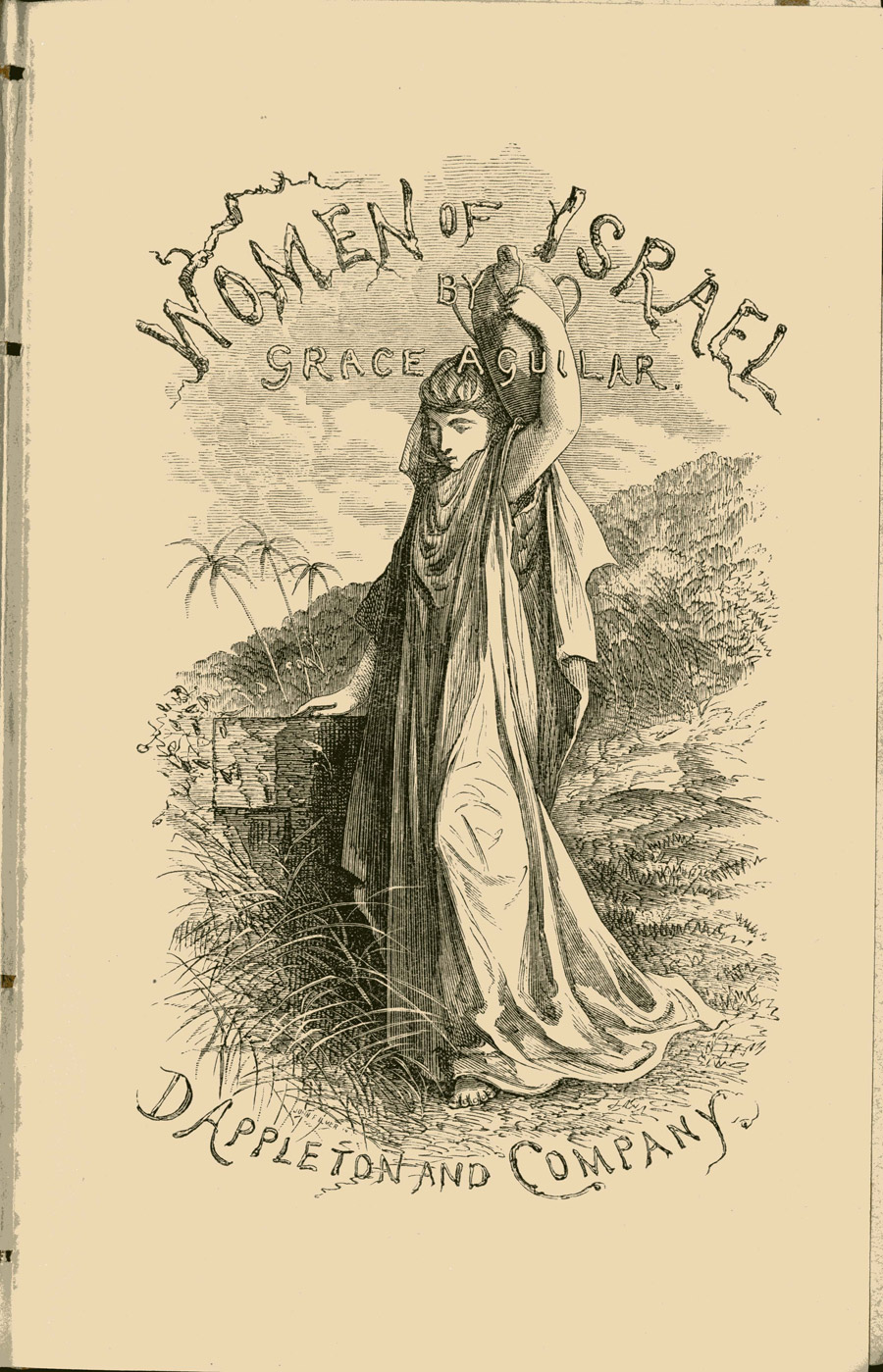Part literary biography, part midrash, part conduct book, The Women of Israel likely became the best-known work of the Victorian era's best-known Anglo-Jewish woman writer, Grace Aguilar. It had a transatlantic life long after its first publication in 1844, as demonstrated by this American edition from 1887, and was praised by both Jewish and Christian reviewers. Indeed, the Methodist periodical Ladies' Repository particularly lauded this edition for its beauty, something evident in the frontispiece's delicately entwined lettering and pensive yet strong female figure. The Women of Israel argues for what Aguilar views as the long overlooked importance of such women in the Bible and earlier Jewish history. But it also serves as a "warning" and "example" for Victorian Jews; as Aguilar asserts, "The women of the bible are but mirrors of ourselves."
Reflections of contemporary debates about the compatibility of Jewishness and Englishness are particularly evident in Aguilar's explication of the Book of Ruth, one that perfectly embodies the opportunities and challenges Ruth's ambiguous conversion posed in the nineteenth century. On the one hand, Aguilar claims that Ruth "does not properly belong by birth and ancestry to the women of Israel," a lineal or racial belonging that cannot be erased even after conversion and marriage. On the other hand, Aguilar recognizes that Ruth is "so entwined" with the people she joins that she cannot be ignored.
Reading against the grain, to use an apt harvest metaphor, illuminates how The Women of Israel employs Ruth to consider whether Anglo-Jews can "convert" to Englishness while still preserving ties to their ancestral and religious pasts. Aguilar subtly inverts the original story, aligning the non-Jewish Ruth with Victorian Jews and the Jewish Naomi with Protestant England. This inversion is evident in Aguilar's repeated emphasis on Ruth's choosing to become a Jew, which makes her "as worthy if not even more so to be the ancestress of David than the lineal descendants of Abraham." Aguilar lauds the way Ruth "voluntarily engrafted herself upon the children of God . . . her acceptance of, and obedience to, the Law were entirely voluntary; not merely received from education and as heritage." For Aguilar, Victorian Jews are like Ruth in that they voluntarily chose England and accepted English laws and habits; thus they could be viewed as not only equally but even more worthy of Englishness than those who have "merely" inherited it.
What Aguilar's interpretation reminds us is that representations of Ruth in Victorian culture
